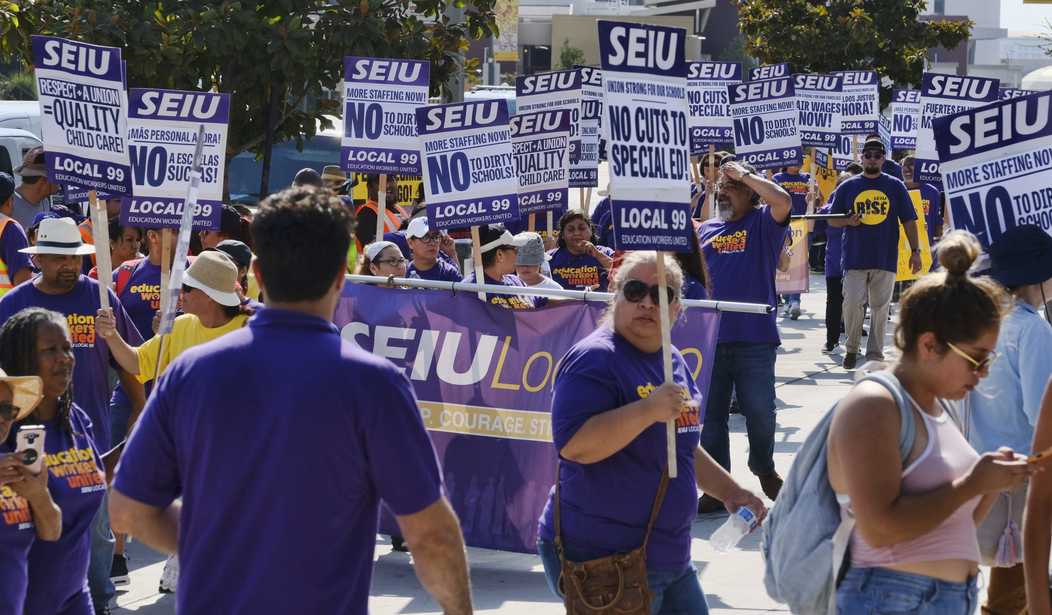When it comes to jobs growth, legal protections for organized labor may be something of a curse particularly when there is a union election.
That’s bad news for any company with a union that also wants an influx of cash to help grow.
Here’s how it plays out.
“We find that union election victories are associated with increased bankruptcy costs, which lead to declines in bond values,” according to a research report published earlier this month by the National Bureau of Economic Research.
“Unions further depress bondholders’ recovery values as they are assigned seats on unsecured creditors’ committees,” the paper continues.
In other words, the lenders (those people who purchased company bonds) lose money on their investment during the bankruptcy court proceedings. Of course, many lenders can take a financial hit in a corporate bankruptcy, but the point here is that when a union is there, they will get hurt more in the situation in question than they would otherwise. At least, that’s the story according to the NBER paper. The researchers studied data covering four decades and then came to that conclusion.
The reasons why the lenders get hit in the wallet are clear and revolve around the extended time it takes to get the company’s finances right side up during a bankruptcy hearing. That problem rests squarely on the shoulders of the unions.
“Unionization is associated with longer, more convoluted, and costlier bankruptcy court proceedings,” says the NBER report, “Bankruptcy and the Cost of Organized Labor: Evidence from Union Elections” by Murillo Campello, Janet Gao, Jiaping Qiu, and Yue Zhang, from Cornell University, Indiana University, McMaster University, and Universite Catholique de Louvain, respectively.
In many things related to business, “time is money.” So the slower pace of a bankruptcy hearing ends up costing lenders.
So what?
Lest we forget, it is the investors who provide the capital to finance new factories and other businesses. Ultimately, without the investors, there wouldn’t be any private sector jobs.
The bad news here is that Wall Street has cottoned on to the problem and so makes it more expensive for firms with unions to borrow.
“Our study shows that these dynamics are recognized by creditors, who in turn price it into firms’ funding costs,” the report says, meaning that the interest rates charged by the lenders tend to be higher than they would be otherwise. That extra interest cost helps compensate investors for the additional risk of lending to a company that has a union.
And the companies that rate the riskiness of the lending, the so-called rating-agencies, are also aware of the problem with unions. In general, anything that makes loans riskier means a lower rating than would be given otherwise. That, of course, means higher interest rates.
If these things don’t make sense, then consider this. If an investor has a choice about which companies to lend cash to, then those without unions present might be a better bet — especially if there is a chance that the firm could get financially squeezed, such as those which operate in industries that are competing with lower-cost competitors overseas.
The result is higher financing costs for companies that have unions. Higher costs mean lower profits and, at some point, fewer jobs.
“It is great to protect the workers, but we can’t forget that without the investors there wouldn’t be any jobs to protect,” says John Tamny, director of the Center for Economic Freedom at FreedomWorks.
There is a small piece of good news in this story. The researchers did not find that the presence of a union increased the risk of a bankruptcy. But that may not make much difference to investors. Few people would invest in a company if they thought a bankruptcy was likely. However, lenders usually look at a worst-case scenario before committing their capital.
As the authors of the NBER report suggest, policymakers may want to better understand “how firm-labor relations shape corporate access to credit.”









Join the conversation as a VIP Member